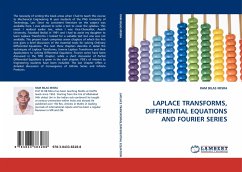High Quality Content by WIKIPEDIA articles! In mathematics, a Fourier series decomposes a periodic function or periodic signal into a sum of simple oscillating functions, namely sines and cosines (or complex exponentials). The study of Fourier series is a branch of Fourier analysis. Fourier series were introduced by Joseph Fourier (1768 1830) for the purpose of solving the heat equation in a metal plate. The heat equation is a partial differential equation. Prior to Fourier's work, there was no known solution to the heat equation in a general situation, although particular solutions were known if the heat source behaved in a simple way, in particular, if the heat source was a sine or cosine wave. These simple solutions are now sometimes called eigensolutions. Fourier's idea was to model a complicated heat source as a superposition (or linear combination) of simple sine and cosine waves, and to write the solution as a superposition of the corresponding eigensolutions. This superposition or linear combination is called the Fourier series.







